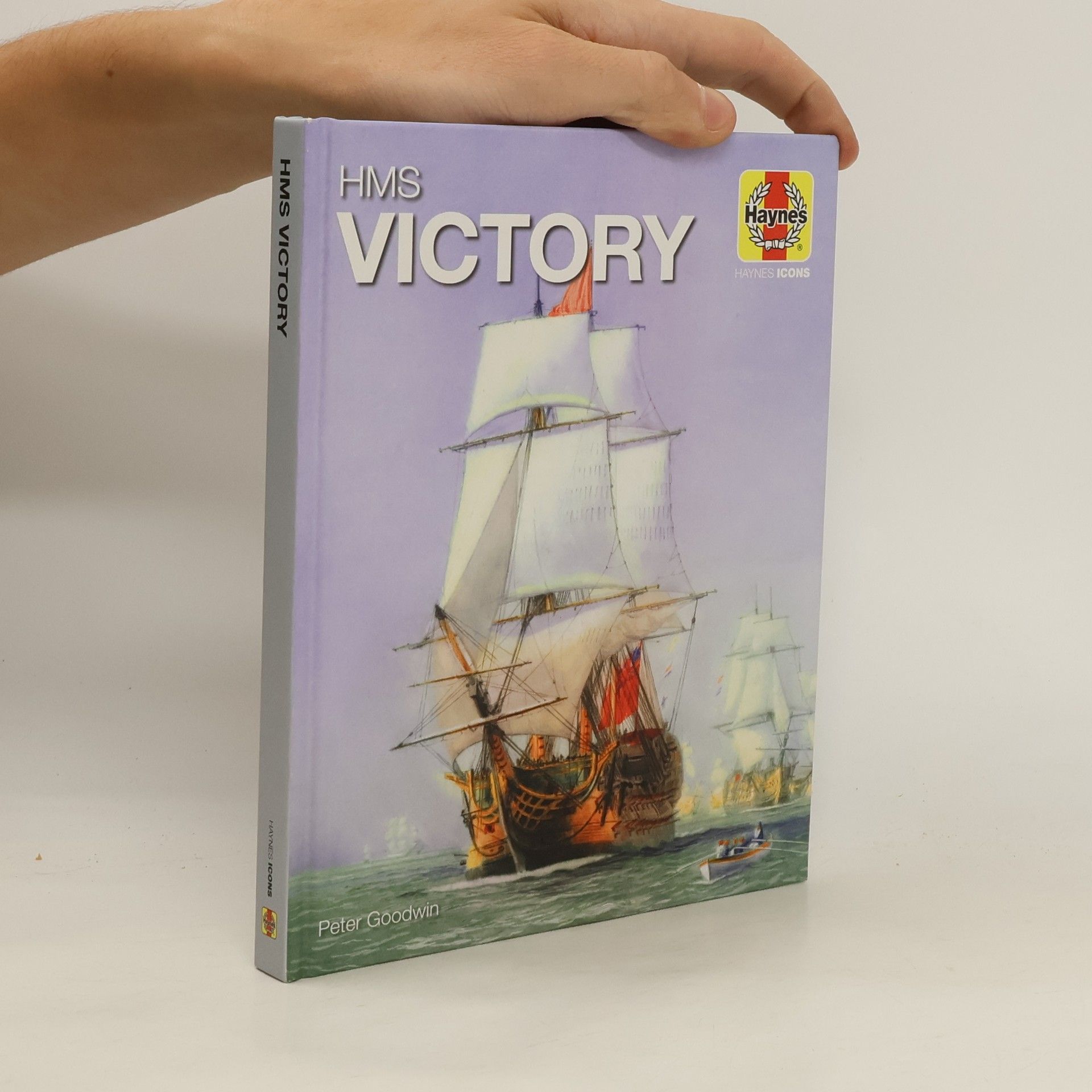Contrary to popular belief, wooden shipbuilding did not remain static during its last two centuries, but developed in many quite fundamental respects. For the modelmaker and technical historian who have long sought the precise details of these changes, this book will answer most, if not all, of their questions. Every aspect of the building process is covered, with considerable space devoted to the exact sizes of timber scantlings and fastenings, and is illustrated in depth with the author's own engineering-standard drawings, and photographs of models and surviving full-size vessels.
Peter Goodwin Libri






HMS Victory (Icon)
- 178pagine
- 7 ore di lettura
When she was launched in 1765, HMS Victory was the ultimate warship of the Georgian era. As Admiral Lord Nelson’s flagship at the Battle of Trafalgar in 1805, she has since become inextricably linked to the memory of Britain’s greatest naval hero. The Victory was built in the 18th century, with an expected life span of less than two decades, so the fact that she survives today – over 250 years later – is remarkable. Published with the cooperation of the Royal Navy, this book takes readers on board Nelson’s Victory to examine the innermost workings of this maritime icon – from stem to stem, above and below decks.
Nelson's Arctic Voyage
- 384pagine
- 14 ore di lettura
In the summer of 1773 Midshipman Horatio Nelson took part in an expedition to the Arctic, which came close to ending his naval career before it had begun. The expedition was to find a navigable northern passage between the Atlantic and Pacific. Supported by the Royal Society and King George III command of the expedition was given to the Hon. Constantine Phipps. This book looks at the detailed preparations made for the expedition and the technical developments that it embraced, including the chronometer, various scientific instruments and a device for distilling fresh water from sea water. It dicusses the fitting out of the ships and the naval skills needed for the extreme conditions they encountered. It also considers Nelson the great naval commander at this early stage of his life and how this experience might have influenced his later career and attitudes. Drawing from the ship's journals, muster books, Commander Phipps's official record of the voyage and other private accounts, this book vividly creates a picture of the expedition, life on board and the multiracial crewmen who served in the ships.
Launched in 1945 and commissioned two years later, submarine HMS Alliance was built for service with the Royal Navy in the Far East. Alliancehad a long and distinguished career of more than 28 years that took her all over the world. Today, Alliance is the centrepiece at the Royal Navy Submarine Museum, Gosport, where the submarine experience is brought to life by tours around the boat. Former submariner and historian Peter Goodwin gives Alliance the Haynes Manual treatment, examining in detail her construction and restoration, and describing what it was like to live, work and go to war in a submarine.
A history of life on board HMS Victory, the world's most famous warship. This addition to the best-selling Conway pocket-book range explores Admiral Nelson's fully preserved flagship HMS Victory, the most tangible symbol of the Royal Navy's greatest battle off Cape Trafalgar on October 21st 1805. Peter Goodwin, the leading historian of the sailing man-of-war, explains the workings of the only surviving 'line of battle' ship of the Napoleonic Wars. And, as Victory was engaged in battle for only two per cent of her active service, the book also provides a glimpse into life and work at sea during the other ninety-eight per cent of the time. Drawing from a selection of contemporary documents and records, Goodwin explains the day-to-day running of a three-decker Georgian warship: victualling, organisation, discipline, domestic arrangements and medical care. He answers questions such as: 'What types of wood were used in building Victory?'; 'What was her longest voyage?'; 'How many shots were fired from her guns at Trafalgar?'; 'How many boats did Victory carry?'; 'What was prize money?'; 'What was grog?'; 'When did her career as a fighting ship end?', and 'How many people visit Victory each year?' Illustrated with black and white diagrams of the ship and maps, this is a full history of the world's most famous warship in a highly accessible pocket-book format.